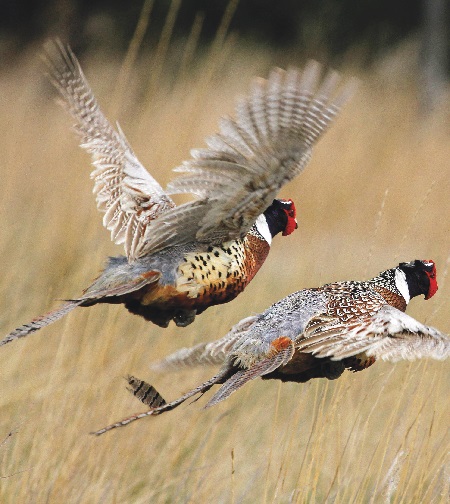 GENERALLY SPEAKING, most pheasant hunters know and follow the hunting basics such as working into the wind, trusting the dog’s nose and only shooting the pretty, colorful ones. But knowing and utilizing a few advanced strategies can increase your chances of success.
GENERALLY SPEAKING, most pheasant hunters know and follow the hunting basics such as working into the wind, trusting the dog’s nose and only shooting the pretty, colorful ones. But knowing and utilizing a few advanced strategies can increase your chances of success.
KEEP UP THE PACE
As a guide, one of the most valuable lessons I’ve learned is that a group of hunters working at a steady pace consistently kills more birds than a group that stops or dallies as they meander through a field.
Conventional wisdom has been for hunters to work slowly to find birds. That approach will turn your hunt into a spectator sport: You’ll watch birds flush out of range.
I’ll admit that stopping isn’t a bad option for solo hunters or those without the aid of good dogs; picking off a tight-holding bird in a large patch of cover is often the best route you can take in these scenarios. However, if you’re hunting in a group with the benefit of competent canines, remember that a wild pheasant’s first instinct is to run, and they never really sit still until they’re out of room at the end of a field or run out of suitable cover.
Pheasants have incredibly keen eyesight and hearing, and when you top off their heightened awareness with a sprinter’s body, it just doesn’t make much sense for them to lounge around and wait for a hunter to catch up with them, and ultimately kill them. Read the whole article at this link: http://www.dakotapheasantguide.com/wp-content/uploads/2014/06/Wild-Pheasants-Article.pdf
Author: Dennis Foster is an outdoor communicator and hunting and fishing guide. He welcomes comments and questions at his site, dakotapheasantguide.com.
